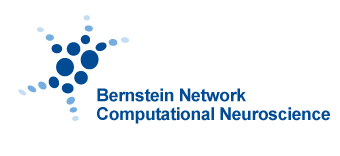Nonlinear spatial integration in retinal bipolar cells shapes the encoding of artificial and natural stimuli
Neural computation, retina, bipolar cells, spatial integration,natural stimuli
Vision begins in the eye, and what the “retina tells the brain” is a major interest in visual neuroscience. To deduce what the retina encodes (“tells”), computational models are essential. The most important models in the retina currently aim to understand the responses of the retinal output neurons – the ganglion cells. Typically, these models make simplifying assumptions about the neurons in the retinal network upstream of ganglion cells. One important assumption is linear spatial integration. In this talk, I first define what it means for a neuron to be spatially linear or nonlinear and how we can experimentally measure these phenomena. Next, I introduce the neurons upstream to retinal ganglion cells, with focus on bipolar cells, which are the connecting elements between the photoreceptors (input to the retinal network) and the ganglion cells (output). This pivotal position makes bipolar cells an interesting target to study the assumption of linear spatial integration, yet due to their location buried in the middle of the retina it is challenging to measure their neural activity. Here, I present bipolar cell data where I ask whether the spatial linearity holds under artificial and natural visual stimuli. Through diverse analyses and computational models, I show that bipolar cells are more complex than previously thought and that they can already act as nonlinear processing elements at the level of their somatic membrane potential. Furthermore, through pharmacology and current measurements, I illustrate that the observed spatial nonlinearity arises at the excitatory inputs to bipolar cells. In the final part of my talk, I address the functional relevance of the nonlinearities in bipolar cells through combined recordings of bipolar and ganglion cells and I show that the nonlinearities in bipolar cells provide high spatial sensitivity to downstream ganglion cells. Overall, I demonstrate that simple linear assumptions do not always apply and more complex models are needed to describe what the retina “tells” the brain.




